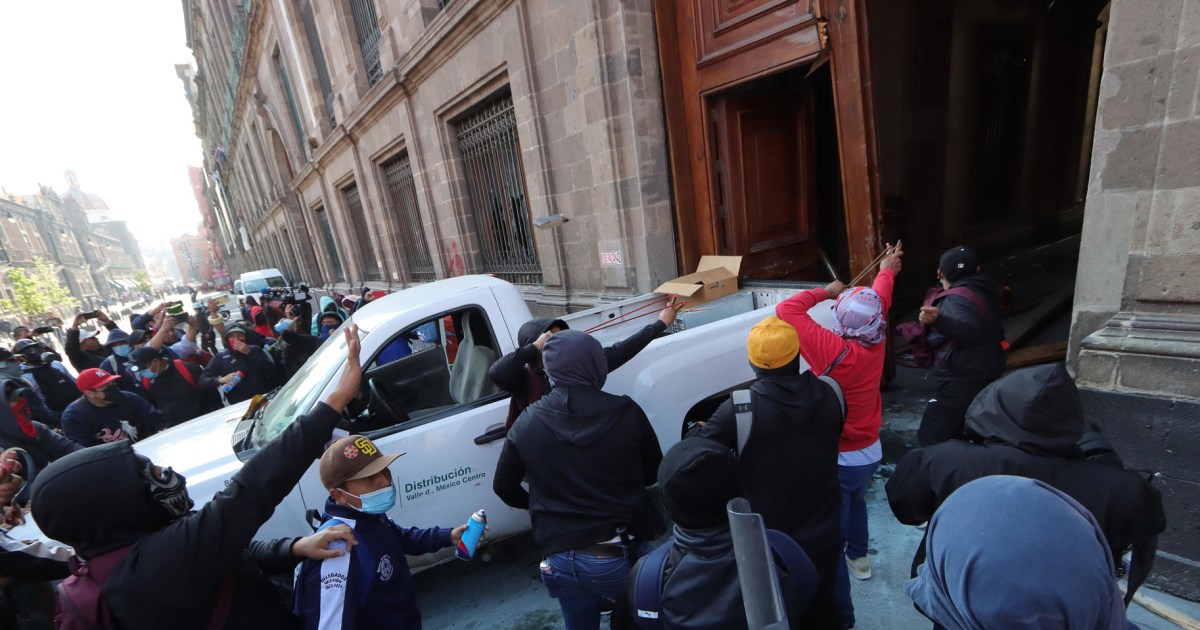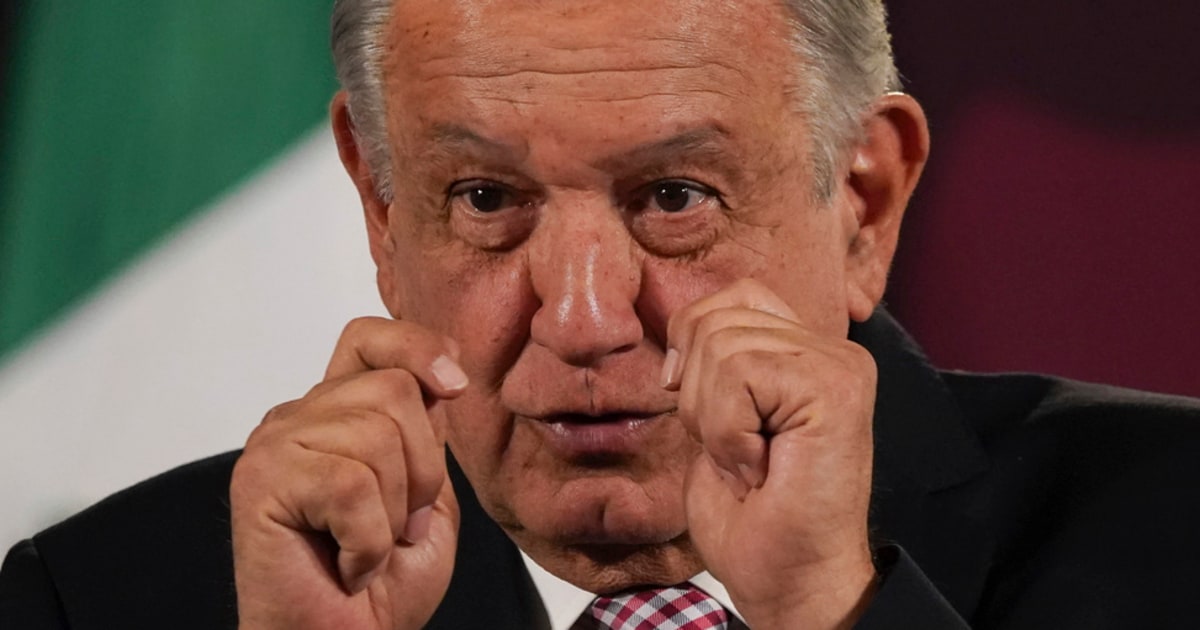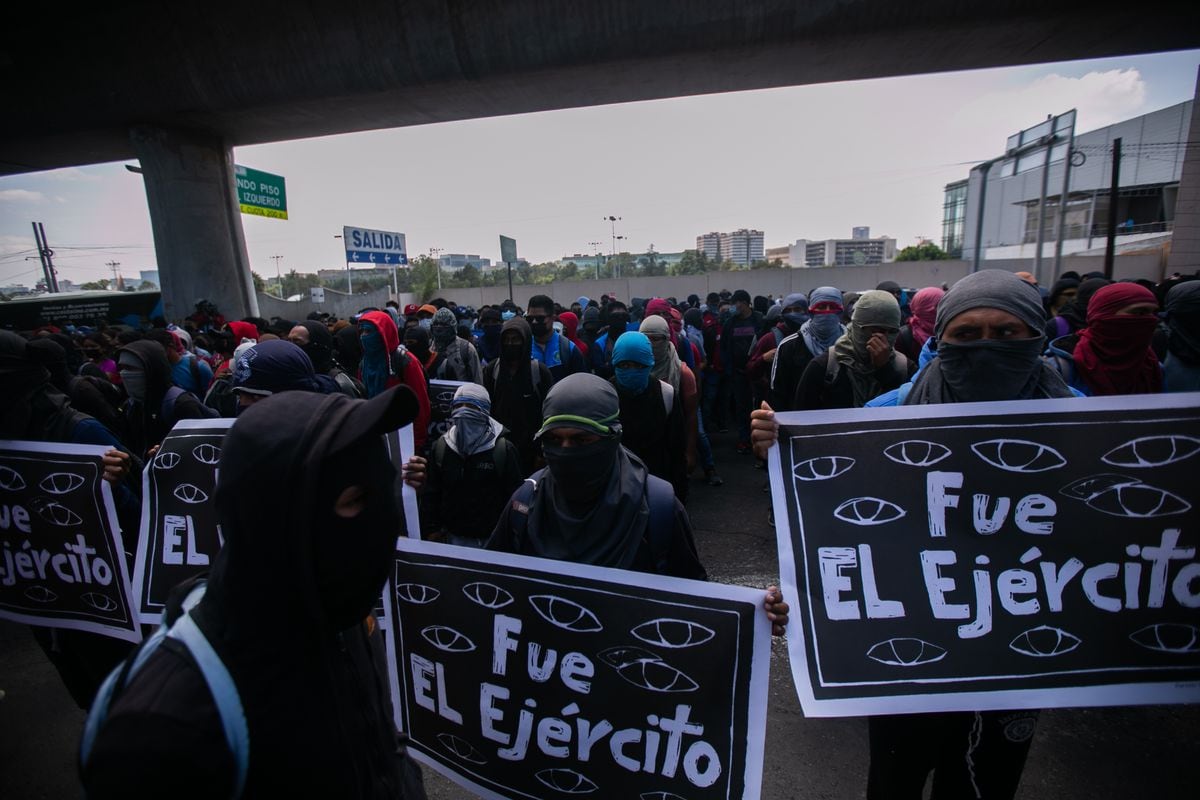Alejandro Encinas, Undersecretary of Human Rights, on Friday during the morning conference of the Government. Presidency of Mexico (EFE)
The new revelations of the Government of Mexico on the
Ayotzinapa case
have given a turn, yet another, to the understanding that was had until now of what happened.
An Army colonel ordered the assassination of 6 of the 43 normalista students, held captive until four days after the attack, on September 26 and 27, 2014, in Iguala, in the state of Guerrero, according to the Executive.
The accusation against a military commander, currently a general, represents an unprecedented turnaround, as important or more important than the arrest, last week, of the first investigator in the case, former Attorney General Jesús Murillo Karam.
Until now, the Government had never accused a soldier of participating in the attack against the students.
The role of his disregard in the protection of the boys, the interception of the communications of alleged members of the criminal network of Iguala by the Ministry of Defense had been pointed out.
The Prosecutor's Office had even managed to arrest a captain of the Iguala battalion for collaborating with Guerreros Unidos, a criminal group that carried out the attack.
But the new accusation, the fact that the head of the Iguala barracks, in charge of hundreds of soldiers, had ordered the murder of captive students, radically changes the story.
The shift is even more relevant because Andrés Manuel López Obrador has made the armed forces one of the great allies of his political project, the Fourth Transformation.
Just a few weeks ago, the president issued a decree so that the National Guard, the heir body of the Federal Police, becomes dependent on the Army.
It is the umpteenth concession to the military, who are already assigned the management of large infrastructure projects such as the Mayan Train.
The president has not personally dealt the blow nor has he been responsible for disclosing the conclusions of the report of the commission investigating the case, but the scene from which these revelations have been made was, on Friday, his morning press conference.
That is,
The information was disclosed, in fact, as an apparently minor fact.
It was done by the Undersecretary for Human Rights, Alejandro Encinas, who came in the morning to take stock of the investigations.
In charge of the presidential commission of the case, Encinas had already presented the report the previous Thursday, but the arrest of Murillo the following day and the announcement by the Prosecutor's Office of obtaining dozens of arrest warrants against military, police and authorities of Guerrero, raised a lot of doubts.
This last step has consequences that are still difficult to calculate, both in the investigation and in the balance between the Government and the Army, which had almost always enjoyed preferential treatment.
One of the most notorious cases was that of the exoneration of former Secretary of Defense Salvador Cienfuegos after his arrest in California in 2020 for alleged links to drug trafficking, according to the DEA, and subsequent extradition.
This Friday, Encinas insisted that the attack against the normalistas was a "state crime", whose first investigation, by Murillo and his subordinates, during the Government of Enrique Peña NIeto (2012-2018), was armed based on torture detainees.
This version stated that police from Iguala and other nearby towns attacked the students in different parts of the municipality, who had traveled there to break up a political act by the wife of the mayor, José Luis Abarca.
The policemen handed the boys over to Guerreros Unidos, who killed them, burned their bodies in a garbage dump, and threw their remains into a river.
Encinas said that this did not happen like that.
The students, he explained, traveled to Iguala to take buses to travel, days later, to commemorate the massacre of October 2, 1968, in Mexico City.
The official pointed out that groups of police and criminals attacked the boys, thinking that members of a rival group were traveling undercover with them.
Encinas said that another possibility, compatible with the previous one, is that one of the buses that the students intended to take was loaded with drugs or money, owned by Guerreros Unidos.
The scope of the notion "state crime" seems to be broadened by what he said later, three minutes from the end of his speech.
As if nothing had happened, Encinas pointed out: "It is presumed that six of the students were alive up to four days after the events, and that they were killed and disappeared on the orders of the colonel, presumably Colonel José Rodríguez Pérez."
The alias Colonel appears in the report, but neither Encinas nor anyone had linked him to Colonel José Rodríguez.
The document states that "the colonel had commented that they had already taken care of six students who had remained alive."
As Encinas spoke, images of various diagrams appeared on the screen behind him, diagrams that appear in the report, but not tested, not crossed out.
The names that cannot be read in the report appeared on the screen as if nothing had happened.
There it could be read that Colonel Rodríguez gave “orders” and “coordinated” with El Chino, head of communications for the criminal group.
El Chino, in turn, "coordinated" with another soldier, currently imprisoned for collaborating with Guerreros Unidos, Captain José Martínez Crespo, in charge of a group of soldiers who patrolled Iguala the night of the attack.
El Chino is also coordinating with Mayor Abarca, whose role, from what Encinas has said, was more important than previously thought in the attack.
The revelations about the role of the Army require reviewing the entire story, present and past.
The main doubt points to the responsibility of the rest of the military in the chain of command, beginning with General Alejandro Saavedra, who was responsible for the Army in the area at the time.
Other doubts point to the circumstances in which the six captive students would have been murdered.
Who are they, why were they held captive?
Where and who kept them locked up?
Why was it decided to kill them?
And of course, a question that flies over the others, why did the military get involved in the attack?
The military action points to the role that other corporations could have played during and after the attack, mainly the Secretary of the Navy, accused of torturing detainees in the case, in the process of constructing the story of the garbage dump and the river in the times of Murillo Karam.
In March, the group of independent experts of the IACHR (GIEI) that is investigating the case in support of the Prosecutor's Office and the presidential commission, reported that a group of marines manipulated the Cocula dump, the main scene of the story that Murillo told then. Karam.
The marines moved white packages in the place and made fire.
This diligence was never included in the file.
subscribe here
to the
newsletter
of EL PAÍS México and receive all the informative keys of the current affairs of this country

/cloudfront-eu-central-1.images.arcpublishing.com/prisa/IZM6CUVMZXDSTOKICBW7PX2JWQ.jpg)





/cloudfront-eu-central-1.images.arcpublishing.com/prisa/GT6J24YGC5GBVOM5TDKKIAZZDY.png)
/cloudfront-eu-central-1.images.arcpublishing.com/prisa/L2GUYXJ3FVDMXESOLU4CJ4VQZY.jpg)
